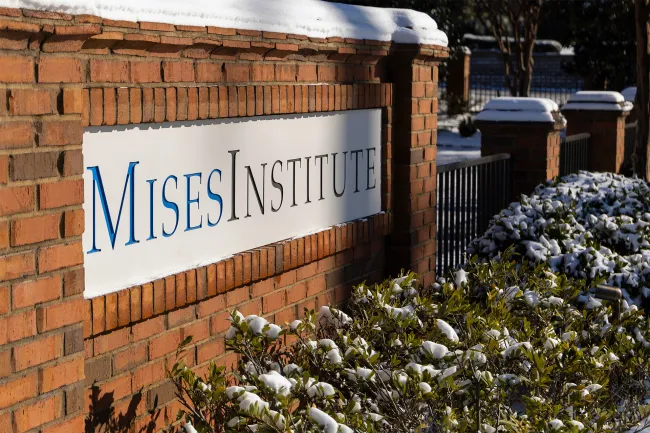Prices in veterinary services for pets have skyrocketed in the UK since 2020. The pompously-named Competition and Markets Authority is the UK’s government antitrust agency. They are in the last phase of an “investigation” into what they believe is an oligopoly in the market for veterinary services for pets in the UK, and they have published their provisional decisions recently. I have talked about this with quite a few people, both vets providing these services and customers who buy them. I have yet to find anyone who does not support this investigation or is worried it will have only negative effects.
Believing in the myth of monopoly pricing, although widespread, suggests lack of economic understanding. It also contradicts everyday experience as we all use prices everyday. However, after endless debates, I now believe very few understand what prices are and, more importantly, how they are formed. In this article, I want to revisit what prices are as an economic concept and how they are formed.
Markets
In an economic sense, markets are not a physical place, nor are there—as per the CMA’s own definition—the producers of a certain good or service. Humans act purposely to achieve their aims and to do that, a lot of the time, they have to come together to exchange goods and services. This is what a market is in the economic sense, people coming together to engage in voluntary exchanges. Both sellers of a good and buyers are needed to form a market. If I started making art, which I am particularly bad at, and found no one that would buy it, could I really say I had a market for my art?
Prices
In an economy with money, prices are what goods and services are exchanged for in a market, as money is the broadly-accepted medium of exchange and prices are the amount of that money that is exchanged. People come together, haggle over a good, and reach an agreement to exchange. This is a voluntary transaction. Both parties agree to it and both benefit from it. Otherwise, why would they exchange?
I might be hungry and act purposely to achieve my aim of eating. I would set out to buy a loaf of bread from a baker. I may offer $20 for a loaf, but the baker may ask for $40. We will exchange if we can agree on a price, let’s say $30. Today this haggling is done by sellers offering a good or service at a price and buyers deciding if they agree with the price and do the exchange or if they disagree and walk away. The buyers then are the stronger party in the negotiations as they decide if the exchange happens. Mises called it consumer sovereignty.
Demand
If we have 100 people looking for loaves of bread but only 80 loaves, people will try to negotiate to secure a loaf. How? By offering more for it. The interaction of supply and demand lead to increased prices. A good current example is the scarcity of houses not meeting demand and pushing prices up.
Here it is very important to point out a detail that most tend to ignore. What drives prices is not the amount of suppliers, but the scarcity of goods or services and the subjective demand for it. Those 80 loaves may be supplied by one supplier or by 80, but it does not change the fact that 100 people want loaves and there are not enough loaves to do around. This scarcity is what makes people offer more per loaf, not who owns the loaves.
Supply
Conversely, if there are only 80 buyers and 100 loaves, suppliers will need to compete to get their customers. How? By accepting less for each loaf. Supply reduces scarcity and thus reduces prices. I, for example, will only buy a certain brand of cereal if there is a sale or deal. I will not buy it at its normal price.
I must also stress the same point as above. It is unimportant who owns the loaves. If there is a scarcity of buyers, even if all the loaves are supplied by one person, he will still need to lower prices to sell his items. A day-to-day example of this are offers and sales.
Government Intervention
It is debatable which is the most persistent myth: that there can be “monopoly pricing,” in which suppliers somehow force people to buy at higher prices than they agree upon, or that government can act to fix this situation. Most government interventions end up increasing prices, not reducing them.
Inflation
The most obvious one is inflation, or the artificial creation of money and credit. Despite common perceptions, this increase is a government policy, its effects now being called “inflation,” a general and persistent increase in the “general price level.”
When government creates money, it is as if someone gives extra money to new potential buyers and they enter the haggling. Now, instead of 80 loaves to 100 buyers, we have 80 loaves to 120 buyers. This will obviously increase prices and importantly, will do nothing to help with the scarcity of loaves.
By treating inflation as an event outside of human control and not an integral part of government interventions, antitrust agencies are intellectually dishonest. This is also true of the CMA in the UK.
Increased Demand
In the UK, the pet population increased dramatically between 2020 and 2023, driven in a great part by government policies during lockdowns. Some estimate this increase at more than 60 percent.
Restricted Supply
In contrast, the veterinary surgeon population only increased by 25 percent during those years. Supply has not increased as much due to government interventions, mainly Brexit. It is telling that the strategy pursued by large veterinary groups has been to buy existing practices instead of setting up new ones. There have even been closures of practices due to lack of veterinary surgeons.
Market Response
Due to the artificially increased demand and the artificially restricted supply, the market has worked efficiently in the only way it can—by increasing prices. It is certainly not true that it is not “working properly.” Now the market is responding as expected again. Increased prices depress demand as buyers seek to economize. The pet population is already shrinking and customers are going fewer times to the vets. This will either moderate the price increases or even cause a drop in prices. This has nothing to do with the CMA but sadly I suspect they will claim it as their victory.
The reality is that government cannot increase supplier competition nor change prices without affecting supply and demand. On the supply side, it can only impose regulations that ultimately reduce supply. In fact, any new regulations will greatly benefit the larger groups and make scarcity even worse.
The only way government can encourage competition is by getting out of the way of people negotiating voluntary, mutually beneficial exchanges.
Conclusion
Prices are exchanges agreed upon voluntarily by both parties involved. To believe that the supplier of a good and service, by becoming a monopoly or an oligopoly, can impose prices is to believe that they can transform a voluntary exchange into a compulsory one. Buyers are suddenly forced to buy. This makes no sense and is thus economically illiterate. I am still waiting for anyone to forward a theory of how this could be achieved by a supplier.
This myth is an example of how governments prey on the lack of economic knowledge that sadly plagues our society to justify more meddling in the lives of the governed. Sometimes I wonder if governments themselves don’t understand what they are doing. Because, if you understand prices, you understand that a monopoly cannot force higher prices onto buyers.


